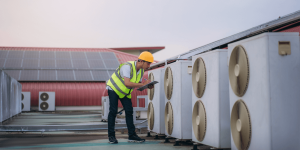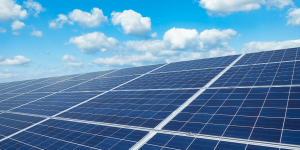Remote self-consumption: a new frontier for renewable energy
Remote self-consumption expands the use of photovoltaics and strengthens the role of renewables, allowing clean energy to be used at sites other than the production site.

With the evolution of the regulatory framework and the growing push for renewable energy sources , remote self-consumption is emerging as one of the most exciting innovations in the Italian energy landscape. This measure expands the possibilities of photovoltaics and enhances its contribution to sustainability.
A step forward towards the diffusion of clean energy
Remote self-consumption introduces a profound change in the way renewable sources are integrated into the national electricity system.
Thanks to this possibility, the energy produced by a photovoltaic system can be used at a point of consumption different from the point of production , as long as both sites are registered to the same entity and connected to the same primary cabin of the electricity grid.
This mechanism significantly expands the scope of photovoltaic applications, allowing businesses, organizations, and public administrations to self-consume renewable energy even remotely, overcoming the physical constraint of proximity.
This innovation is pushing the country towards a more intelligent, distributed and sustainable management of energy , promoting energy autonomy and reducing emissions linked to the consumption of electricity from fossil fuels.
More efficient, flexible and widespread photovoltaic
From a technical point of view, remote self-consumption opens the way to new plant configurations and more flexible planning of investments in renewables.
Companies with multiple operating locations will be able to install photovoltaic systems on non-productive areas or warehouses , using the energy generated to cover the needs of other locations connected to the same primary grid.
Among the main advantages:
- maximizing self-consumption and reducing withdrawals from the electricity grid;
- enhancement of available surfaces , such as car parks, warehouses or industrial areas;
- optimization of energy performance thanks to the coordinated management of energy flows;
- possibility of integrating storage and intelligent control systems to balance production and demand.
For designers and installers, the model opens up new opportunities in multi-site photovoltaic design, in connecting and monitoring energy flows between plants, strengthening the link between distributed generation and efficient consumption management.
A new scenario for the energy transition
Remote self-consumption is part of the development process of energy communities and collective self-consumption configurations, strengthening the contribution of renewables to the decarbonisation of the electricity system .
It represents a decisive step towards a more local, digital, and participatory energy model, where photovoltaic production not only reduces electricity costs but becomes a strategic lever for competitiveness and sustainability.
This evolution consolidates photovoltaics as a cornerstone of national energy independence, capable of adapting to different application contexts and offering concrete solutions for achieving European climate neutrality goals.
Related Focus







